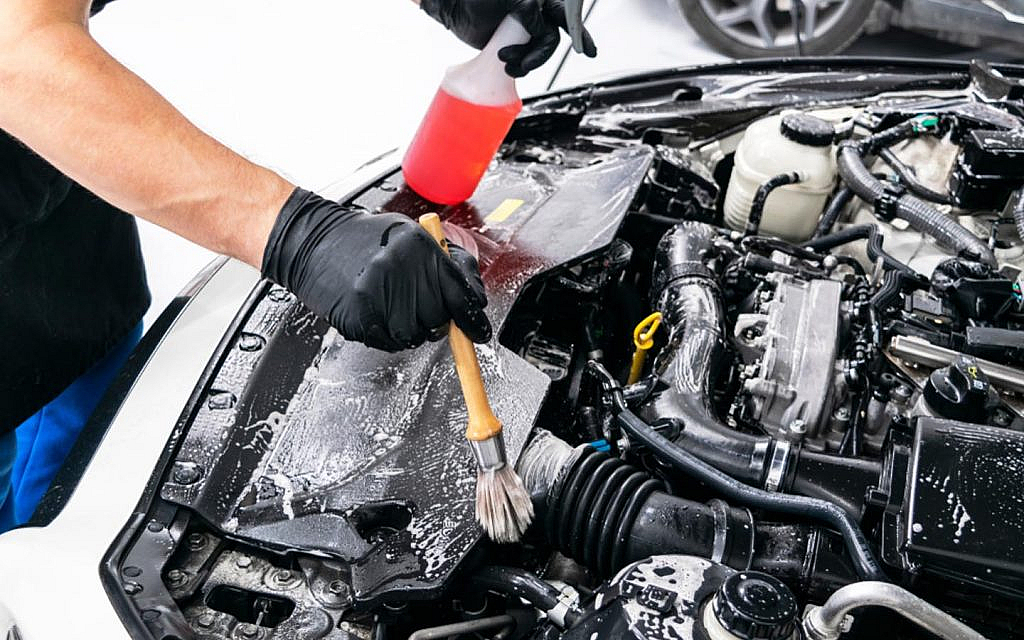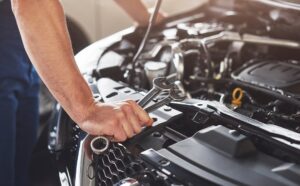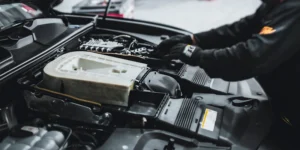Taking care of and cleaning your car’s engine is important for keeping it running well, lasting a long time, and looking good generally. Performing regular upkeep can help stop dirt buildup, corrosion, and electrical problems. Here are some of the best ways to clean and take care of your car’s engine:
1. Get the Supplies You Need: It’s important to have the right tools and supplies for a safe and effective cleaning job.
Tip: Get a soft-bristled brush, an engine cleaner or cleanser, microfiber cloths or towels, a hose or pressure washer (if you have one), and safety gear like gloves and eye protection.
2. Get Your Engine Ready: Getting the engine ready keeps water from damaging sensitive parts.
Tip: Before you start the engine, make sure it’s cool to the touch. To keep water out of sensitive parts like the air intake, distributor, and electrical connections, use plastic bags or metal foil to cover them.
3. Remove Surface Debris: Getting rid of surface dirt and debris makes things clearer and keeps them from getting contaminated.
Tip: Take out any loose dirt and dust from the engine bay with a soft brush or compressed air. Be careful not to damage the hoses, wires, or battery. To avoid damage, don’t use too much force.
4. Use an engine cleaner or degreaser. Degreasers get rid of tough oil and grime, which makes cleaning go better.
Tip: Spray a lot of engine cleaner or lubricant all over the engine bay, paying special attention to places that are oily, like the engine block and valve covers. To get rid of dirt and oil buildup, let it soak for as long as the product says to.
5. Scrub and Rinse: Scrubbing and rinsing thoroughly get rid of dirt and degreaser leftovers that are deep in the surface.
Tip: Scrub areas that have been treated with degreaser gently with a soft-bristled brush, focused on areas that are very dirty. Rinse the engine bay well with a pump or low-pressure water spray to get rid of all the cleaner and dirt.
6. Dry Engine Parts: It’s important to dry things the right way to avoid water spots and electricity problems.
Tip: Carefully dry the exposed parts of the engine with a microfiber cloth or towel, making sure to get into corners and crevices where water can gather. Let the engine bay dry out fully in the air before you start the engine.
7. Take care of and protect
Why it’s important: keeping engine parts clean and dry makes them last longer.
Tip: Use an engine treatment or protectant that doesn’t corrode on clean, dry surfaces. Stay away from silicone-based items that are close to electrical parts. This step makes the engine bay look better and helps keep water and dirt away.
8. Inspect and maintain it regularly. Why it’s important: regular inspection stops problems before they happen and makes sure the engine runs at its best.
Tip: After cleaning, look for cracks, wear, or leaks in the hoses, belts, and connections. Take care of any issues right away to avoid problems and keep your reliability.
9. Be careful and follow safety rules
Safety measures keep people from getting hurt and keep engine parts from getting damaged.
Tip: While you’re cleaning, make sure you wear gloves and eye protection. To keep from damaging things, don’t spray water directly on electrical parts or hot surfaces.
10. Make an appointment for professional detailing. Why it’s important: professional detailing cleans thoroughly and makes sure that sensitive parts are handled carefully.
Tip: You might want to have your engine detailed by a professional every so often, especially when you need a deep clean or are working with modern, sensitive engine parts.
In conclusion
Cleaning and taking care of your car’s engine on a regular basis not only makes it look better, but it also makes it last longer and run better. If you keep up with these top tips and cleaning plan, you can keep your engine bay clean, working, and in great shape for years to come. Always put safety first, and only use the right tools and methods to get the best results without hurting the engine.


